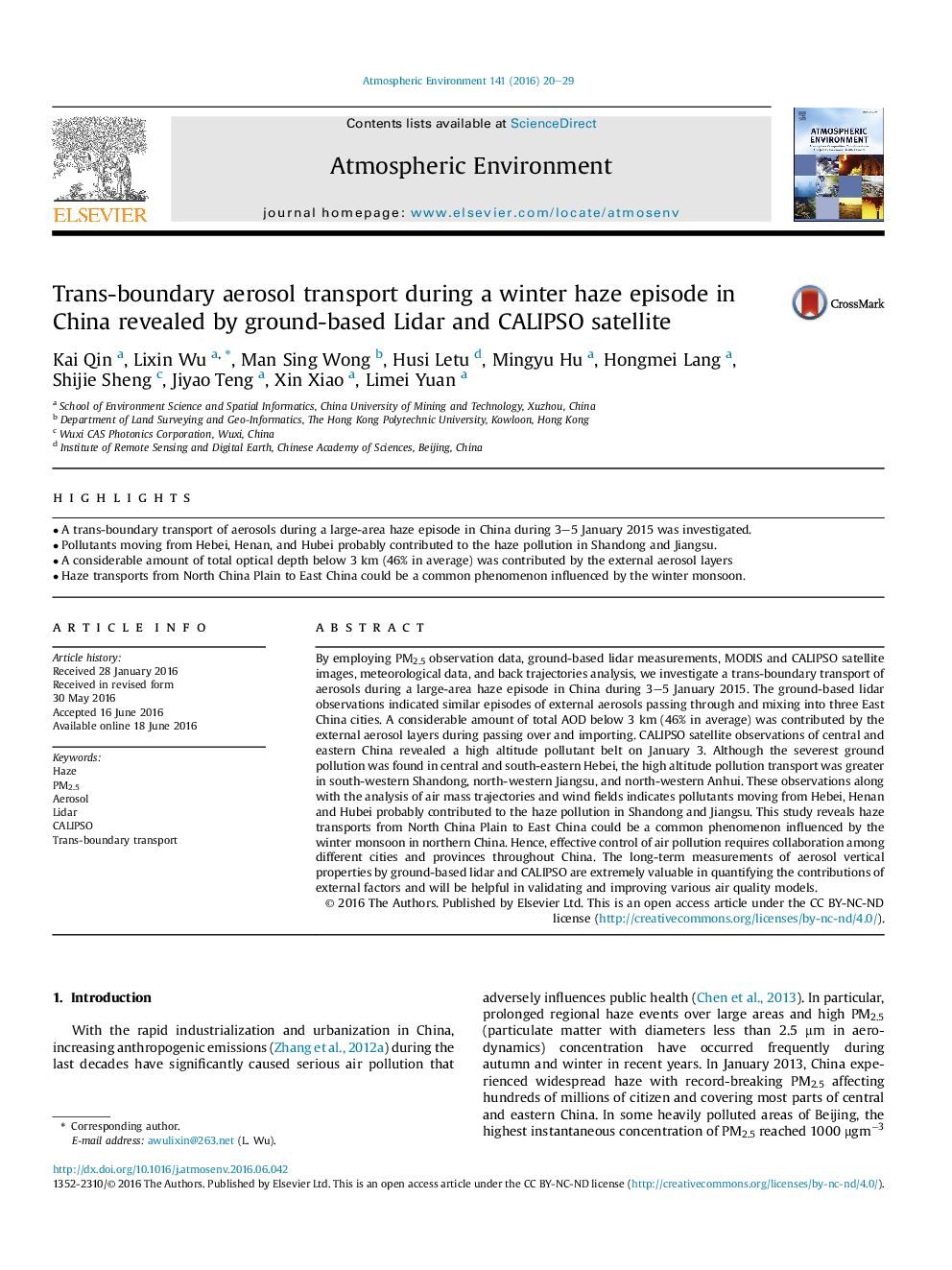| Article ID | Journal | Published Year | Pages | File Type |
|---|---|---|---|---|
| 6335981 | Atmospheric Environment | 2016 | 10 Pages |
â¢A trans-boundary transport of aerosols during a large-area haze episode in China during 3-5 January 2015 was investigated.â¢Pollutants moving from Hebei, Henan, and Hubei probably contributed to the haze pollution in Shandong and Jiangsu.â¢A considerable amount of total optical depth below 3 km (46% in average) was contributed by the external aerosol layersâ¢Haze transports from North China Plain to East China could be a common phenomenon influenced by the winter monsoon.
By employing PM2.5 observation data, ground-based lidar measurements, MODIS and CALIPSO satellite images, meteorological data, and back trajectories analysis, we investigate a trans-boundary transport of aerosols during a large-area haze episode in China during 3-5 January 2015. The ground-based lidar observations indicated similar episodes of external aerosols passing through and mixing into three East China cities. A considerable amount of total AOD below 3Â km (46% in average) was contributed by the external aerosol layers during passing over and importing. CALIPSO satellite observations of central and eastern China revealed a high altitude pollutant belt on January 3. Although the severest ground pollution was found in central and south-eastern Hebei, the high altitude pollution transport was greater in south-western Shandong, north-western Jiangsu, and north-western Anhui. These observations along with the analysis of air mass trajectories and wind fields indicates pollutants moving from Hebei, Henan and Hubei probably contributed to the haze pollution in Shandong and Jiangsu. This study reveals haze transports from North China Plain to East China could be a common phenomenon influenced by the winter monsoon in northern China. Hence, effective control of air pollution requires collaboration among different cities and provinces throughout China. The long-term measurements of aerosol vertical properties by ground-based lidar and CALIPSO are extremely valuable in quantifying the contributions of external factors and will be helpful in validating and improving various air quality models.
